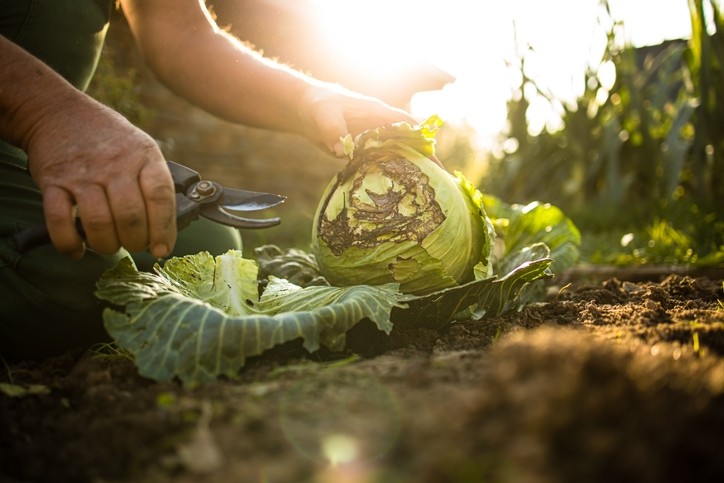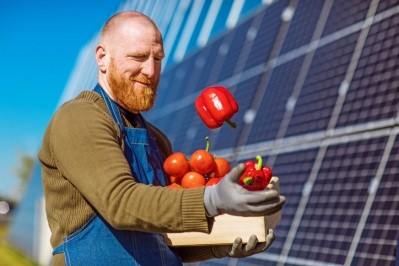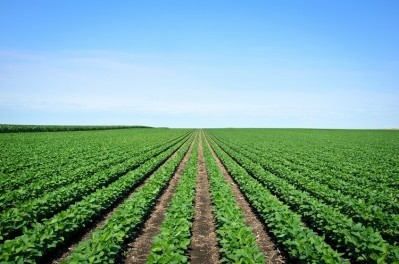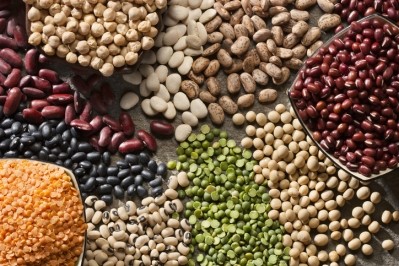Regenerative agriculture 'key to future-proofing food sector', says EIT Food

It has just joined the new European Carbon+ Farming Coalition established by the World Economic Forum’s CEO Action Group for the European Green Deal.
According to EIT Food, the project aims to decarbonise the European food system, while maximising other benefits such as soil health and farmer resilience. It will take a farmer-centric approach to focus on increasing the uptake of regenerative and climate-smart agriculture practices, identifying the roadblocks to adoption, designing solutions with economic, practical and ecological benefits to farmers.
The project’s initiatives include:
- The Regenerative Agriculture Revolution programme, which involves offering training to farmers in Europe on the principles of regenerative agriculture and how to apply these to their farms, as well as working with agrifood companies to transition their supply to regenerative agriculture.
- Grow Workshops, educational workshops on emerging practices and technologies that aim to establish regional and European networks of farmers and support the uptake of sustainable and circular solutions by farmers.
- The Test Farms programme, linking agricultural startups with farmers and testing-land, to help agritech innovators test their products and services on real-life farms.
- The Innovator Fellowship, a six-month skills and mentoring programme for innovators in the agrifood sector, working on responses to global food challenges. The programme includes dedicated creative challenges on soil health and agrifood sustainability.
It comes amid rising interest in the potential of regenerative agriculture to reduce the negative impact of food production on the health of the planet.
There is not at present a standard definition of regenerative agriculture. Generally, it refers to practices consisting of minimum or reduced tillage; cutting the use of chemical pesticides and fertilizers, crop rotation, well-managed grazing versus industrial feed, and increasing soil fertility through biological means such as the use of cover-cropping.
Unilever -- which has an ambitious plan to reach net zero by 2039, 11 years before many of the world’s largest food brands have pledged to eliminate their contribution to carbon emissions -- recently unveiled five new Regenerative Agriculture Principles focusing on the areas where action is needed most. These consist of regenerating soils; protecting water; increasing biodiversity; developing climate solutions; and improving farmer livelihoods.
A new report by AI-powered market data company Spoonshot notes that a number of food majors have not only been investing in sustainable farming but have also started to ‘reap the rewards of this bold new stance’. Regenerative agricultural practices, it said, have proved much healthier for animals, crops, and profits of farms.
Business interest in regenerative farming has gone up by 138% since 2019, it claimed, adding: “Companies investing in this space are collecting tons and tons of data that will help them track emissions, erosion, carbon soil sequestration, and even diversity in birds, insects, and microbes. All of this can then be used by the companies towards informing their sustainability goals.”
Spoonshot data, meanwhile, show that interest in conscious purchasing of food has grown by 551% among Gen Z. It noted the recent unveiling in the US of protein bar maker Epic’s Beef Barbacoa-Inspired Bar -- said to be the first bar to carry the Ecological Outcome Verification (EOV) Seal from the Savory Institute which measures regenerative farming practices.
Among the near 460 eco labels in use globally, with over 120 different types in use on food and drink products, there is as yet no specific regenerative agricultural certification in Europe. Spoonshot now expects to see an increased demand for transparency from consumers “not only in terms of generic callouts, like sustainability, but for more specific information on how exactly a product is sustainable”.
Opportunities for nutritious, carbon friendly foods
EIT Food sees five things that define regenerative agriculture, its CEO Dr. Andy Zynga told FoodNavigator. These are minimising soil disturbance, so more carbon is kept in soils; minimising the use of chemical inputs; maximising soil biodiversity; crop covering for as long as possible to increase soil diversity; and adapting to local environments.
These methods offer food companies two main benefits, he said: the opportunity to cut emissions from supply chains, and to make products with a greater nutritional composition. “Many of the products produced by regenerative agriculture are more nutrient-dense with more minerals, trace elements and vitamins,” he told us, adding: "Many big food brands have ambitious CO2 reduction targets. When they work with regenerative farming methods and buy their products from regenerative farmers, the CO2 balance becomes more positive.”
Less is more
Regenerative agricultural methods further allow food companies to tap “unmet demand from consumers willing to pay a premium for more sustainable products,” he said.
“Surveys suggest 75% of consumers feel a moral obligation to buy more sustainable goods and services and 60% say they are compelled to buy more sustainable products, so the hope is that they are prepared to pay some more money.”
He noted other studies from the Rodale Institute in the US that claim regenerative farming practices, although temporarily leading to 28% less yield, have 78% better profit in the long term. “Less quantity but better quality equates to value created and captured. That's a positive trend I see in the marketplace."
Can it meet the demand?
This begs the question: can regenerative practices therefore produce enough to meet the rising consumer demand for food with a lower or potentially net positive impact on the environment?
"I think that regenerative agriculture still has a little way to go to be looked at on equal terms with traditional farming methods in terms of output,” Zynga responded. “But we see in some cases that it already matches or exceeds traditional farming methods. The only issue is that there's a transition period as it takes a little more time to become profitable.”
EIT Foods hopes the transition can happen, he said, as it believes regenerative methods offer better resistance against extreme weather events which it warns are ‘more forthcoming’.
"Regenerative agriculture has been shown to make the crops more resistant to extreme climate events, such as droughts or heavy rainfalls,” Zynga added. “If you have a rich soil with a rich microbiome, it can absorb water a lot better and it doesn't flow off as fast. That means fewer harvests get lost."

















